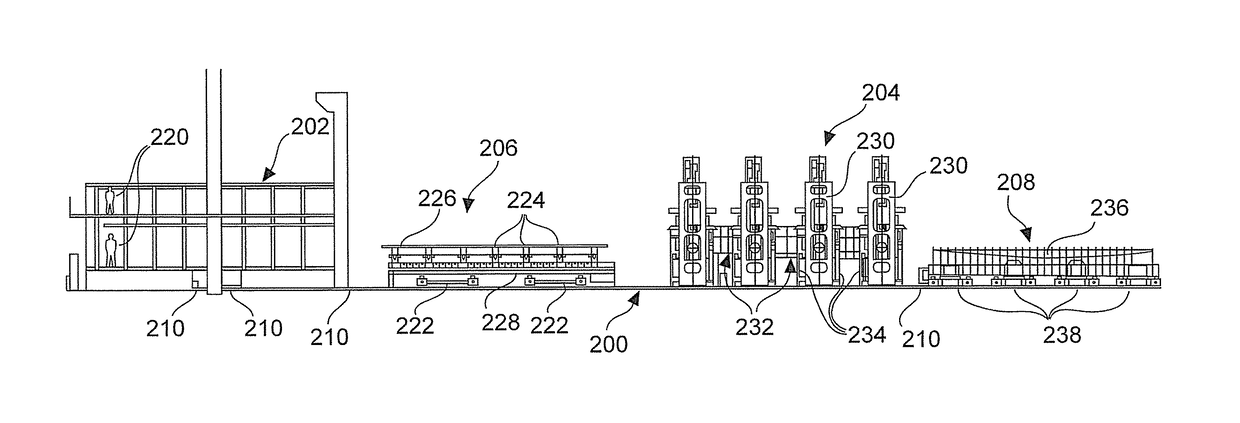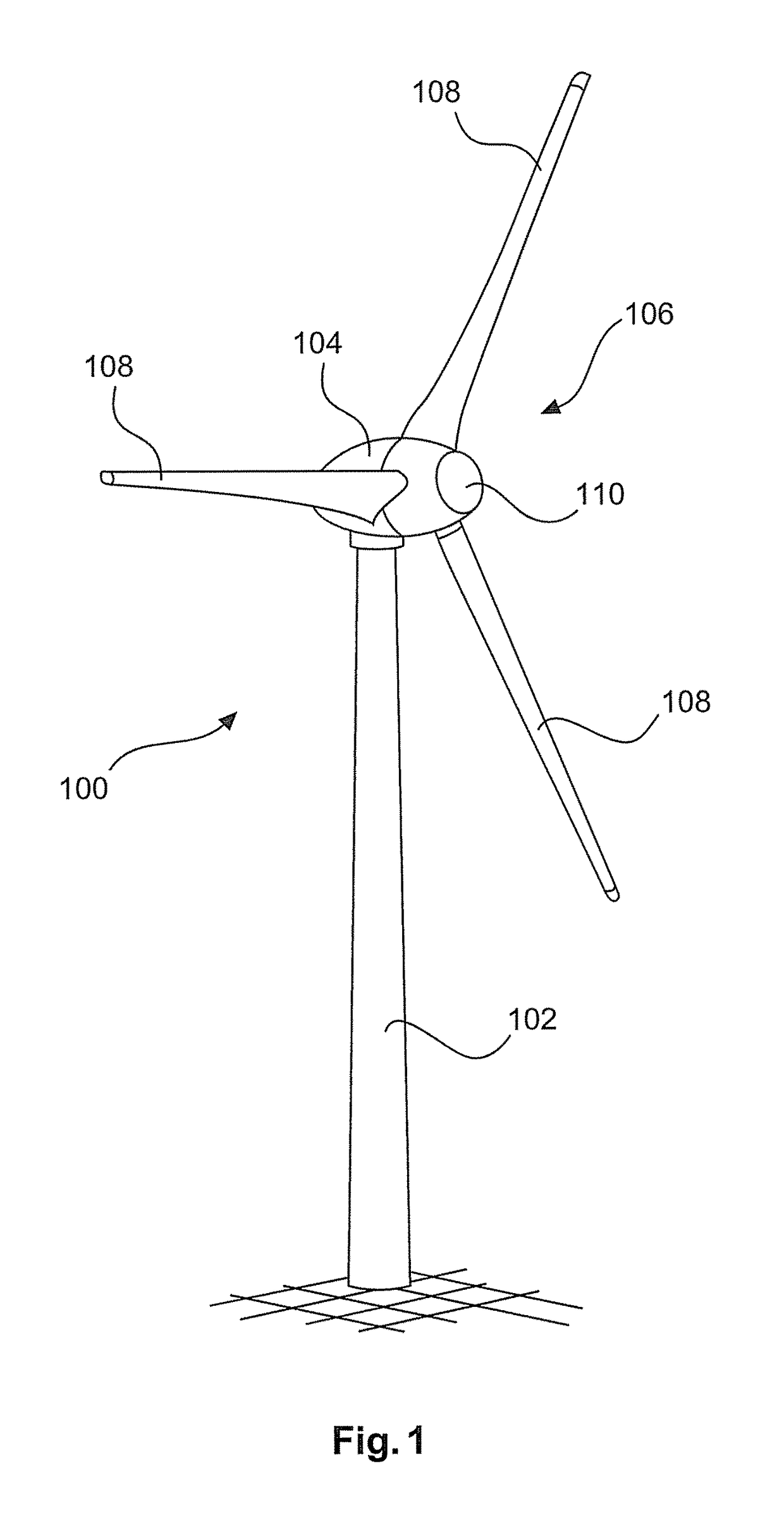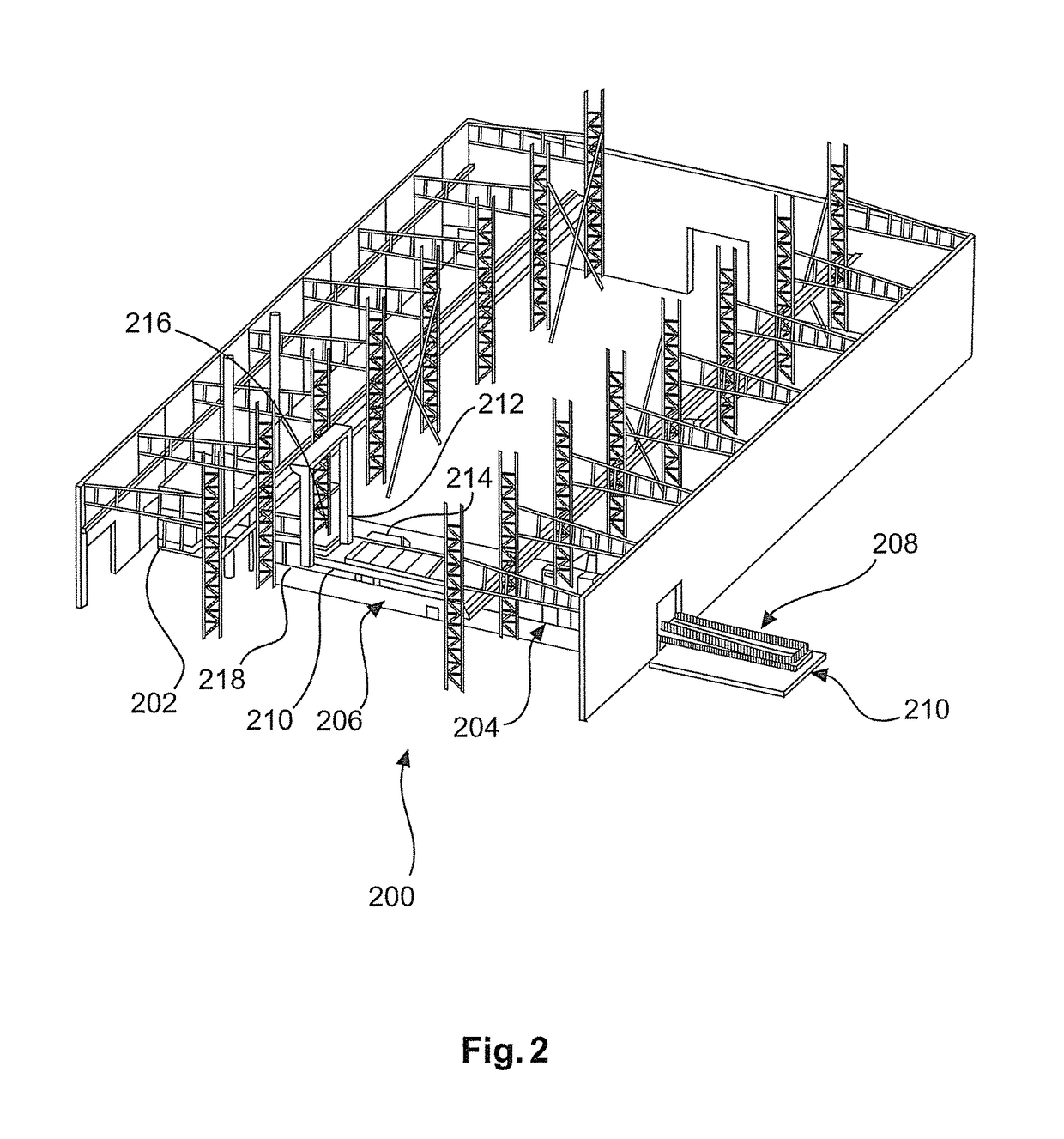Forming process for hot forming a steel sheet of a rotor blade to be produced for a wind energy plant
a technology of forming process and rotor blade, which is applied in the manufacture of final products, soldering apparatus, and auxilary welding devices, etc., can solve the problems of only a severely limited extent of re-use of steel construction experience, and the transfer to the manufacture of rotor blades of wind power installations is basically impossible. , to achieve the effect of more rapid performan
- Summary
- Abstract
- Description
- Claims
- Application Information
AI Technical Summary
Benefits of technology
Problems solved by technology
Method used
Image
Examples
Embodiment Construction
[0065]Hereinafter identical references can be used for similar but non-identical components to emphasize the common aspects of the functionality of some such components.
[0066]FIG. 1 shows a wind power installation 100 comprising a pylon 102 and a pod 104. Arranged on the pod 104 is a rotor 106 with three rotor blades 108 and a spinner 110. In operation the rotor 106 is caused to rotate by the wind and thereby drives a generator in the pod 104.
[0067]FIG. 2 shows a perspective view illustrating the overall configuration of a forming station 200. Essential components of that forming station 200 are the furnace 202 which here is in the form of an annealing furnace, the pressing apparatus 204 which can also be referred to as the pressing stand, a hearth bogie 206 which transports steel sheets from the furnace 202 to the pressing stand 204, a form bogie 208 on to which the steel sheet is transferred from the hearth bogie 206 in the pressing apparatus 204 and a rail system 210 connecting t...
PUM
| Property | Measurement | Unit |
|---|---|---|
| thickness | aaaaa | aaaaa |
| thickness | aaaaa | aaaaa |
| depth | aaaaa | aaaaa |
Abstract
Description
Claims
Application Information
 Login to View More
Login to View More - R&D
- Intellectual Property
- Life Sciences
- Materials
- Tech Scout
- Unparalleled Data Quality
- Higher Quality Content
- 60% Fewer Hallucinations
Browse by: Latest US Patents, China's latest patents, Technical Efficacy Thesaurus, Application Domain, Technology Topic, Popular Technical Reports.
© 2025 PatSnap. All rights reserved.Legal|Privacy policy|Modern Slavery Act Transparency Statement|Sitemap|About US| Contact US: help@patsnap.com



